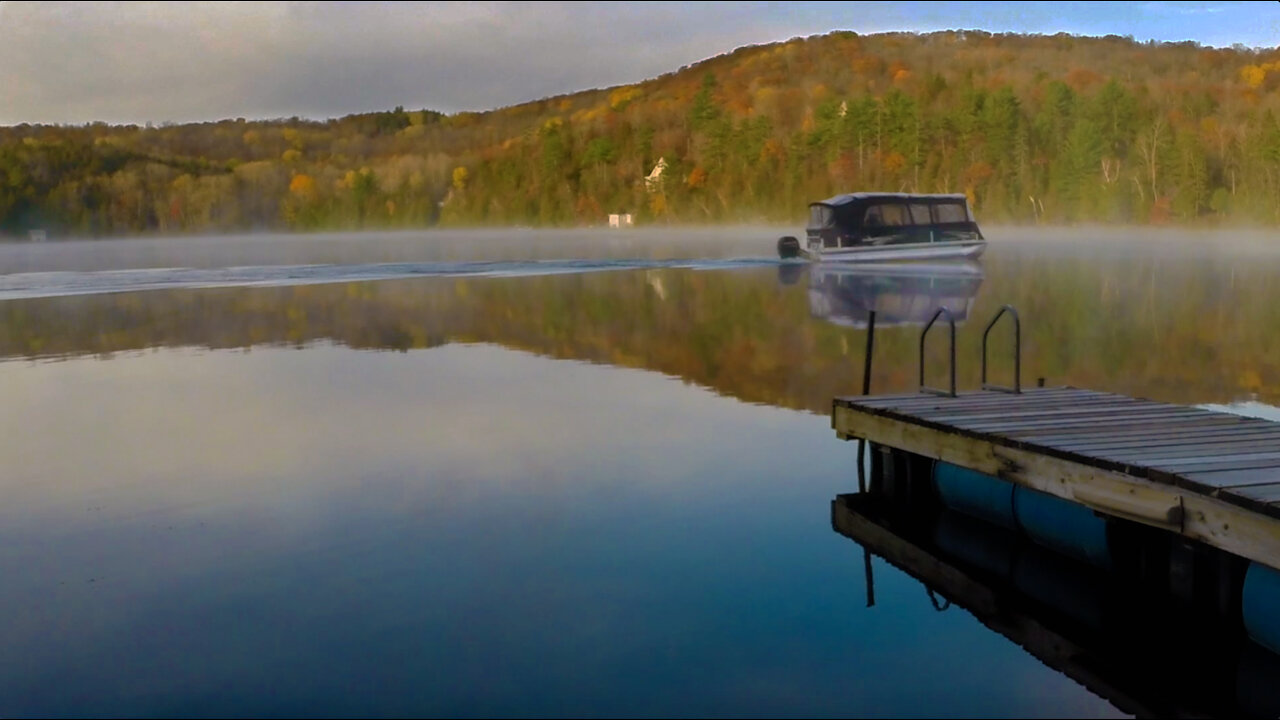Premium Only Content

Foggy October lake burn-off. Timelapse
Enjoy this early morning moody scene set by the steam rising off the surface of Lac Sainte-Pierre in Quebec, Canada.
A misty morning fog conjures a sense of mystery—but why the fog appears isn't so mysterious once you understand what it is and how it forms. It’s a beautiful sight, and one that becomes more common when the weather shifts from warm summer sunrises to crisp, cold autumn mornings. The phenomenon goes by many names, including steam fog, evaporation fog, frost smoke and sea smoke. So what makes it happen?
Fog forms when cool air and warm water meet and, more specifically, when the difference between the temperature and the dew point is less than 4° Fahrenheit.
Water is heated by the sun and stays warmer than the air during the cool night. When the cold layer of still air settles over the lake, warm water vapor from the lake evaporates, entering the cool air above it.
The thin, warm, moist layer of air over the pond then mixes with the cooler air from the land. As it cools, condensation occurs and a fog forms. It looks like steam rising off the water, hence the name 'steam fog.'
This happens not only over bodies of water but even over moist surfaces, like dew-covered meadows or even over your own skin if you get sweaty while jogging on a chilly morning.
Now, next time you go out for a morning stroll along the edge of a lake or a pond and you see this happening, you can appreciate not only the beauty of it but also the science behind it!
-
 0:21
0:21
AmplifiedLIFE
8 months ago $0.01 earnedThe Waters Above and Below
55 -
 2:45:39
2:45:39
Tundra Tactical
11 hours ago $27.76 earnedTundra Nation Live : The Worlds Okayest Gun Live Stream
52.9K1 -
 17:06
17:06
Professor Nez
9 hours ago🚨BREAKING: Elon Musk to BUY MSNBC!? Dems STUNNED by Brian Williams’ Viral Video!
46.1K62 -
![If You Smell LALALALA What CHiLi IS COOKING!!... #RUMBLETAKEOVER [Overwatch 2]](https://1a-1791.com/video/s8/1/e/s/X/3/esX3u.0kob-small-If-You-Smell-LALALALA-What-.jpg) 4:27:40
4:27:40
CHiLi XDD
11 hours agoIf You Smell LALALALA What CHiLi IS COOKING!!... #RUMBLETAKEOVER [Overwatch 2]
27.9K1 -

Delnorin Games
12 hours ago🔴 Live - Star Citizen
55.2K12 -
 1:39:44
1:39:44
HELMET FIRE
13 hours agoDEADROP IS BACK!
143K8 -
 10:03
10:03
Tundra Tactical
15 hours ago $15.10 earnedBrandon Herrera Vies Bid for ATF Director!
92K16 -
 22:01
22:01
DeVory Darkins
1 day ago $36.29 earnedHakeem Jeffries SHUTS DOWN The View as Matt Gaetz Speaks out
80.8K129 -
 2:02:54
2:02:54
Mally_Mouse
14 hours agoLet's Play!! - Spicy Saturday
60.3K2 -
 1:33:06
1:33:06
Slightly Offensive
15 hours ago $30.74 earnedAre You Ready for What's Coming Next? | Just Chatting Chill Stream
77.2K42